EVERYTHING YOU NEED TO KNOW ABOUT THE 2019 SMOKERS
PERFORMANCE 125/150/250 TWO-STROKE BUYER’S GUIDE
This isn’t a buyer’s guide to every two-stroke motocross bike made. It is similar to a buyer’s guide in the sense that it consists of every 2019 two-stroke motocross bike that MXA has tested over the last 12 months. We aren’t going to waste space telling you the bore and stroke, displacement, wheelbase or head angle of each bike, because those are facts that even we don’t care about. We are going to tell you the real facts about our experiences with these 2019 two-stroke motocross bikes (and you should easily be able to move that forward for 2020 (just expect to pay about $100 more. Our truth consists of a little history, what they cost, what we like and what we hate. That should put you on the right track.
2019 YAMAHA YZ125 — PRICE: $6499
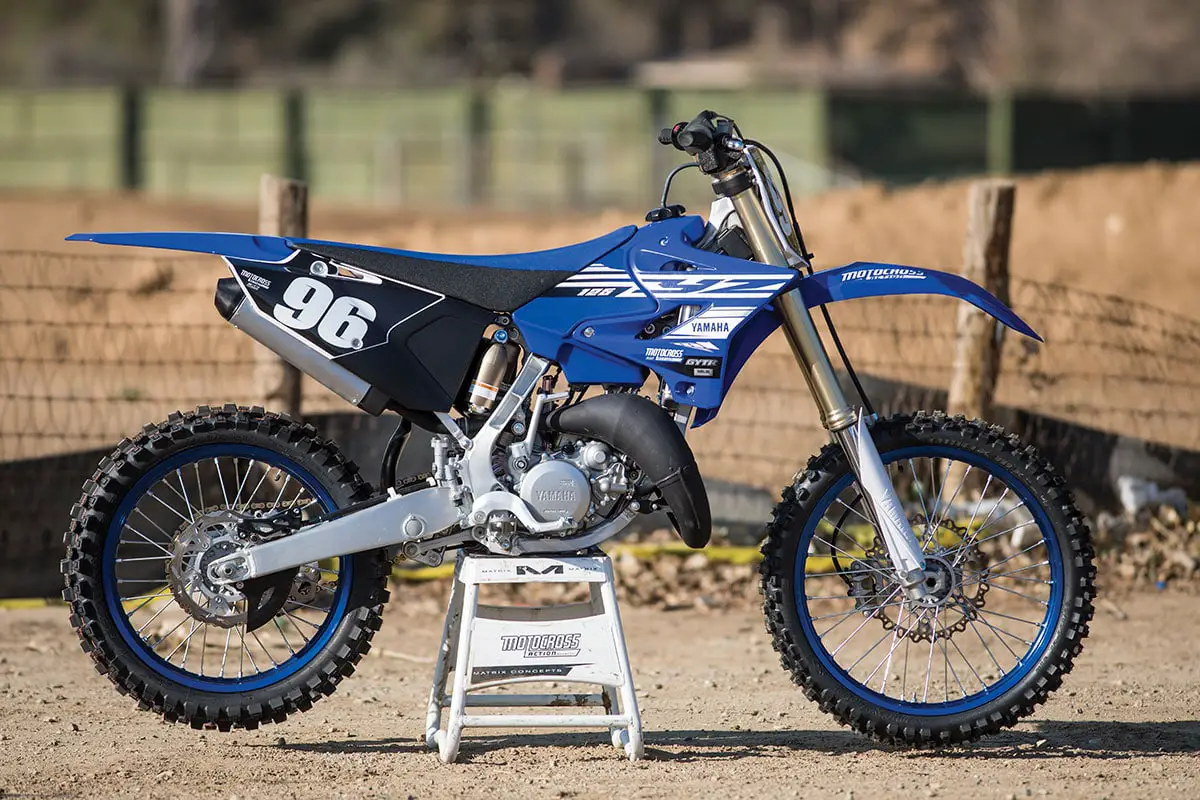
For two-stroke enthusiasts, the Yamaha YZ125 is the most playful bike in the smoker lineup. It has been a good bike since 2005 when Yamaha introduced the aluminum frame and all-new engine. The YZ125 went from good to great in 2006 once Yamaha decided to use Kayaba’s SSS (Speed Sensitive System) forks. The 250 four-stroke was becoming the dominant race bike in the 125cc class. Yamaha dumped beaucoup bucks into an all-new YZ125 in 2006, but it had no chance in a grudge match with its cousin, the YZ250F. Over the past 13 years, Yamaha’s biggest updates to the neglected YZ125 have been cosmetic. The frame, engine and suspension have remained stagnant over that time period. This bike was ahead of its time in 2005 but has slowly grown long in tooth. We still love riding it; we just hate racing it.

WHY DO WE LOVE THIS BIKE?
We adore the YZ125. It will go down as one of the best bikes in history that never won a National title. It is a bike that got overshadowed by the 250 four-strokes. Having said that, the YZ125 handles like a dream. It goes where you want it to sooner, faster, easier and safer than any bike on the showroom floor. The SSS forks are the best in the biz, making light to heavy riders feel as if Bones Bacon were their personal suspension tuner. The 34-horsepower engine isn’t anything to brag about in 2019, but it offers a powerband that doesn’t have any holes, just as long as the rider keeps his left hand busy manipulating the clutch.
WHY DO WE HATE THIS BIKE?
We hate the YZ125 because it is the slowest tiddler on the track. Racing it puts any rider at a disadvantage. On small-displacement bikes, superb handling only goes so far. It is all about the power on race day.
2019 YAMAHA YZ250 — PRICE: $7399

The YZ250 is an iconic bike in the sport of motocross. It was far ahead of its time back in the early 2000s. It took over race tracks across the country because it was that much better than the rest, just like the Honda Elsinore and 2005-’08 Honda CRF450s. In 2005, Suzuki actually tried to replicate the YZ250 engine (and it was successful). But, the addition of the Kayaba SSS forks in 2006 made it a compete package that separated it from the competition.
Like the YZ125, four-strokes started taking market share from the 250 two-strokes and the Japanese manufacturers saw the writing on the wall and cut their two-stroke budgets to zero. In 2007 Honda discarded both its CR125 and CR250, while Suzuki drop kicked its RM125. By 2009, only Yamaha and KTM had smokers in their fleet. Since that time, the YZ250 has, for the most part, been dominant over the KTM 250SX. Only in the last few years has the KTM 250SX reigned over the YZ250. Although, to this day, racers, including some from the MXA wrecking crew, will choose the archaic YZ250 over its Austrian competition due to is smooth power.

WHY DO WE LOVE THIS BIKE?
The YZ250 has the perfect engine curve in stock trim. It is easy to ride, has no dips or valleys and doesn’t fall off on top. This curve makes riding the YZ250 easy and enjoyable. There is no honeymoon period. You get on the bike and you mesh with it instantly. Its Kayaba SSS components are the best on the track bar none. They work for riders of every skill level and weight category. You know this bike is going to stand the test of time, because it has already stood the test for the last 13 years. Yamaha shot itself in the foot with the YZ250, because used YZ250s sell like hotcakes, hindering new 2019 YZ250 sales.
WHY DO WE HATE THIS BIKE?
We hate that the YZ250 could reign king over the 250 two-stroke class once again with little effort, but Yamaha does nothing about it. The 2019 Yamaha YZ250 and KTM 250SX make close to the same pony power; the KTM just produces it sooner and faster. All Yamaha has to do is copy the Pro Circuit or FMF pipe design and update the reed valve to add a few more ponies and bump up the torque. The chassis is outdated. It shakes at speed. When you increase the trail to take weight off the front, it turns slow. A good chassis like the KTM 250SX’s doesn’t shake and turns great.
2019 KTM 125SX — PRICE: $7199
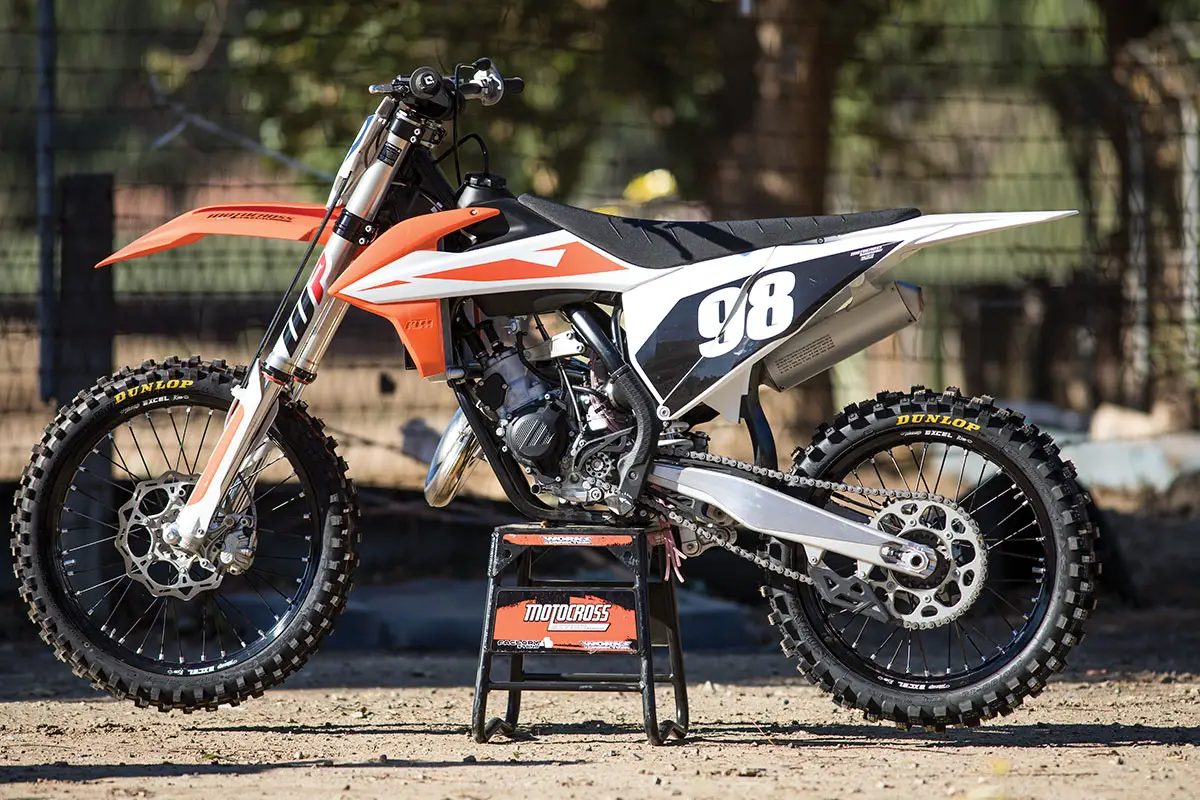
For years the KTM 125SX powerplant has been superior to the measly 34 ponies of the YZ125. Since 1999, the 125SX engine has reigned as best engine in the 125cc class. There were even years when the KTM 125SX won the MXA 125cc shootout against the Japanese competition due to its superior engine. The rest of the KTM package was average at best. But, once the Japanese manufacturers started drop-kicking their smokers from their model lines in favor of thumpers, KTM saw an opportunity that no one else recognized. KTM knew there would still be a market for two-strokes. Smokers were all most racers had known since they had been in diapers. These riders weren’t going to toss them to the side like the green, red and yellow pencil pushers in Japan.
KTM knew that history repeats itself and that two-strokes would be back. KTM went full throttle in two-stroke R&D while everyone else backed out; however, it wasn’t until 2016 that KTM developed a chassis that was on par with the YZ125’s. Unfortunately, the WP 4CS forks were horrible. WP went back to the drawing board and released the WP AER 48mm air forks the next year, making the KTM 125SX a compete package.
WHY DO WE LOVE THIS BIKE?
The 2019 KTM 125SX comes in at 38.23 horsepower. Not only is it extremely powerful for a tiddler, it offers a good overall powerband from bottom to top. No more having to flap away at the clutch lever to get it into the meat of the powerband. It has enough pick up off the bottom to get you moving without abusing the clutch. The chassis is great. The brakes are great. The clutch is great—and the great list goes on. This is the best 125cc smoker that has ever been offered on a showroom floor.

WHY DO WE HATE THIS BIKE?
We are still feeling the pain from when KTM made the switch from the Keihin to the Mikuni carburetor back in 2017. The jetting was awful in 2017, and it is as good as it is going to get in 2019; but, we don’t think it will ever be as good as the Keihin carb was. Serious engine tuners toss out the Mikuni and swap in the tried-and-true Keihin carb. We like having the power-valve adjuster; we just wish it were easier to understand and tune. There is a learning curve to understanding how it works, and you need a square-shaped Robertson wrench to adjust it. We use flat-blade screwdrivers, but over time they will strip out the square hole. The rest of our complaints are geared toward the entire KTM SX lineup: The airbox needs more air vents. The plastic shock collar wears out, and the spokes and sprocket bolts come loose.
2019 KTM 150SX — PRICE: $73999
The KTM 150SX has been in KTM’s lineup since 2007—although it was called the KTM 144SX up until 2008. The displacement stayed the same, at 144cc, only the name changed. Why? We are guessing they changed the name for marketing purposes. The number 144 doesn’t roll off the tongue as easily as the number 150. Either way, you would think a bike that didn’t have a place in the market at a time when two-strokes were in exile would flounder. No sir!
The first year the 144SX was introduced it outsold its identical brother, the KTM 125SX 2 to 1. Sales were so good for the 150SX and so bad for the 125SX that KTM decided not to sell the 125SX in the U.S. from 2009 to 2012 (although it was only the U.S. market that drop-kicked the 125SX). Ultimately, KTM brought the 125SX back into the U.S marketplace because many race organizations didn’t know what to do with the 150SX. It was amateur legal against the 250cc four-stroke but wasn’t legal in the 125cc two-stroke classes.
WHY DO WE LOVE THIS BIKE?
Sheer power. It makes a whooping 40.6 horsepower and 18.6 foot-pounds of torque. That is over two horses more than the KTM 125SX, although the 150SX’s power delivery is much different from that of the 125SX. The 150SX gets moving faster and revs through the powerband much quicker, making you shift sooner. This fast, quick-revving, hard-hitting engine gets you over the jumps easier than the 125SX. Even though this bike is faster, more racers choose the 125SX over the 150SX when they ride them back to back.
WHY DO WE HATE THIS BIKE?
The hard-hitting powerband makes the bike more erratic than the 125X, which has a smoother delivery. The suspension doesn’t work as well, and it is harder to handle. You have to shift more and be more precise when shifting, as the power falls off on top. This is normal behavior when a bigger cylinder and piston are bolted onto the 125cc engine. To build a smooth style of power for a 144cc engine, you must start building from scratch like TM does—although the expense of building an all-new bike would not go over well with the pencil pushers in Austria.
2019 KTM 250SX — PRICE: $8199

The first KTM 250cc two-stroke race model was introduced in 1971. It was way behind the Swedish, Czech and Japanese bikes at that time; however, KTM did its homework and won a 250 World Championship in 1974 with Russian Gennady Moiseev behind the bars. He won twice more on a KTM in 1977 and 1978, putting KTM on the map in Europe. Although the KTM 250cc machine had great success in Europe, it was a flop in U.S. racing. The KTM 250SX never won a race in the states, but the KTM 125SX got its first win on U.S. soil in 2001 with Grant Langston. KTM didn’t win a premier class race until Ryan Dungey came on board in 2012. KTM tried to get a win on its 250SX by hiring the winningest Supercross racer of all-time in 2003. Sadly Jeremy McGrath hated the bike and dislocated his hip before the Supercross season even started. The KTM 250SX became a winning machine way too late in the game of professional racing.
WHY DO WE LOVE THIS BIKE?
The 250SX engine has a power curve much like that of an overbore 300cc engine. It hits hard and signs off fast. If feels extremely powerful from bottom to mid — and it is. It produces four more ponies at 7000 rpm and offers three more foot-pounds of torque 500 rpm lower in the rpm range than the Yamaha YZ250. This style of power gives you an engine that is quicker, more responsive and has instant throttle response. Throw in the hydraulic clutch, great brakes, no-tools airbox and a workmanlike chassis, and you have good machine on your hands.
WHY DO WE HATE THIS BIKE?
We have a love/hate relationship with the 250SX’s power plant. We still don’t understand why KTM shelved its already-good, 50-horsepower engine back in 2016. It was the chassis and suspension that were bad, not the engine. The 2016 250SX engine was broad, strong and much easier to ride than the 2019 engine. We will admit the 2019 vibrates much less and offers other superlatives; it just take a skilled marksman to ride the 250SX to its full potential. Most riders have to find ways to tame it and broaden the power because it is too abrupt for the average Joe.
2019 HUSQVARNA TC250 — PRICE: $8299

The Husky TC250 is a carbon copy of the KTM 250SX with a small difference in personality. They share the same engine, chassis and suspension. The difference is that Husky uses D.I.D. DirtStar wheels, not Excels; Pro Taper bars rather than Neken; and GFK brake rotors instead of Galfers. They have different swingarm shapes, airboxes, colors and plastic shape. Other than that, the Husky TC250 is the KTM 250SX’s doppelganger. And we don’t like it. They should be two distinctly different bikes.
It is hard to be mad at KTM/Husky owner Stefan Pierer, because he made a smart business move. He implemented something called “platform sharing.” This simply means that different products and the brands can share the same components. This is done to reduce cost and create a more efficient product development process. It is like hitting two birds with one stone. Don’t applaud Mr. Pierer for the brilliant idea. Auto manufacturs have been doing this for years.
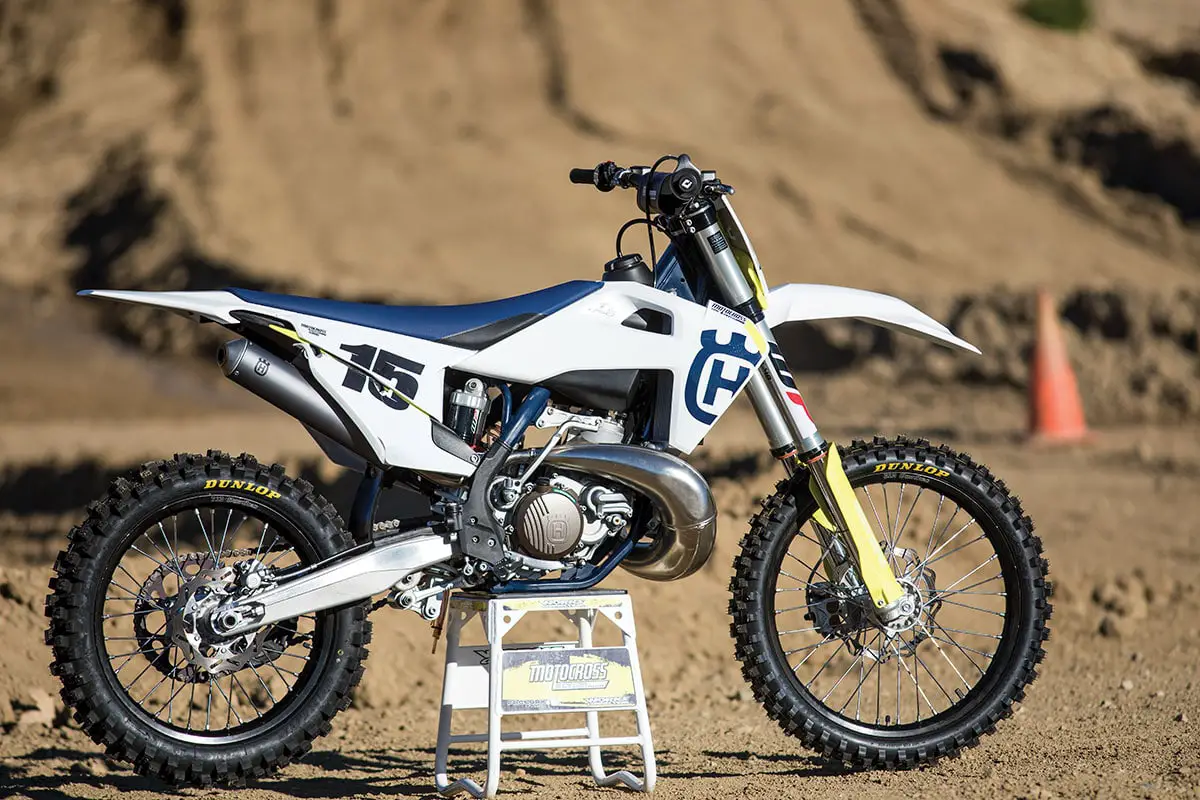
WHY DO WE LOVE THIS BIKE?
The KTM 250SX and TC250 engines are violent. They come on extremely hard on the bottom, hit hard in the midrange, then sign off before you even know what happened. Some riders with a calculated right hand can tame this beast. Since the TC250 has a super-restricted airbox, that abrupt power is smoothed out and the length of the powerband is extended. No, this doesn’t smooth out the powerband to YZ250 levels by any means. It just gives riders some relief. The great thing is if you like the break-neck KTM style better, just start drilling holes in the airbox.
WHY DO WE HATE THIS BIKE?
Even though the Husky engine is detuned compared to the KTM 250SX (due to the closed-off airbox), it is still a different style of power to get used to. We manipulate the power by using taller gearing, a heavier flywheel and adjusting the pesky square power valve tuner clockwise to mellow out the power and lengthen the power curve.
2019 HUSQVARNA TC125
PRICE: $7299
Under its armor, the Husky TC125 has been the spitting image of the KTM 125SX since 2014 when Stefan Pierer purchased the Swedish brand from BMW. Since the KTM 125SX had a great engine and a decent chassis, it was a great platform to start with, especially since the past CR125 Huskys were slow and outdated. The Husky and KTM differentiated themselves by style of plastic, color, different aftermarket parts and, most notably, the airbox. Husky uses a plastic subframe rather than the traditional aluminum one. This plastic airbox has more flexibility, giving the rider more comfort in the rear end; however, the airbox was closed off from ventilation to the engine, giving the identical engine a different feel.
WHY DO WE LOVE THIS BIKE?
We love this bike because Husqvarna is part of an old motocross heritage. For a long time, the Husky brand lost its way. Now, under Stefan Pierer’s supervision, it is flourishing once again. As the TC125 has the identical engine, chassis and suspension as the KTM 125SX, it offers a great package out of the box. Due to the closed-off airbox, it offers a tamer style of power. It is easier to manage with it revving out slower throughout the rpm range. What the majority of riders love about the Husky is that it sits a 1/2 inch lower from the middle of the seat to the back than the KTM. If you want to turn your TC125 into a TC150, Husky offers a bolt-on big-bore kit for $799.99. It includes a head, cylinder, piston, rings, gaskets, ECU, wrist pin and power valve.
WHY DO WE HATE THIS BIKE?
We absolutely hate that the Mattighofen juggernaut purposely detunes the Husky lineup. The closed-off airbox of the TC125 costs it 1-1/2 horsepower on the dyno. That is a lot when it comes to tiddlers. In 2020, we heard rumors that the Husky and KTM four=stroke models would come with a vented airbox, which they did; however, they are not coming on the two-stroke line. It doesn’t make much sense. The good thing is you can just buy one at your local dealer for the 2020 FC250 and snap it on to your TC125 to match the KTM 125SX’s power.
2019 TM 300MX — PRICE: $9295
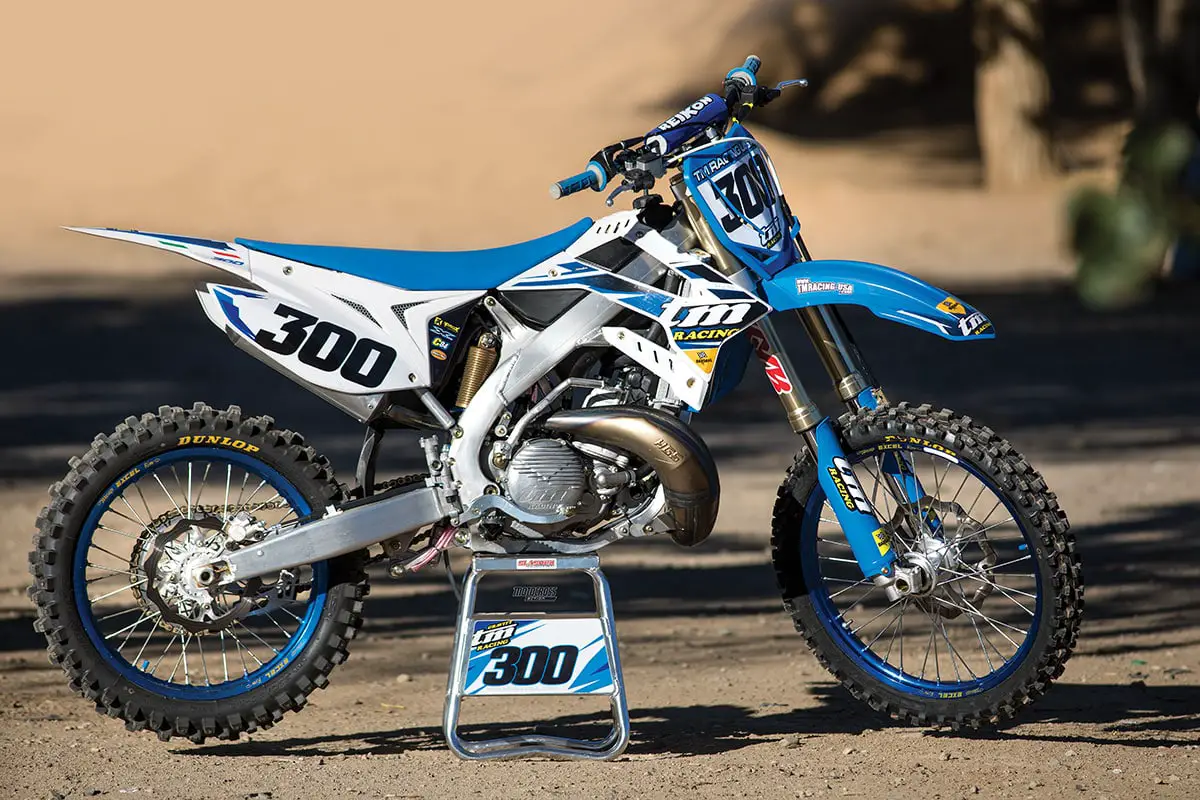
The 2019 TM 300MX was all new for 2019. It offered the first electric start on a two-stroke motocross model, an electric power valve operated with a push rod, and shed serious weight from the previous models. The power is like nothing else we have ridden. This bike shows how far TM has come in recent years. The American TM market has grown significantly since U.S. importer Ralf Schmidt has taken over. This changing of the guard has put pressure on TM to make more Americanized TM models. Traditionally, TMs are big, tall, and have stinkbug rear ends and European suspension settings. The 2019 300MX rings in a new era for TM.
WHAT DO WE LOVE ABOUT THE BIKE?
The TM 300MX tracks like a four-stroke. It is a strange sensation at first, but once you get used to it you can use it to your advantage. The rear wheel doesn’t break loose like on normal two-strokes. It tracks around corners like a four-stroke would. Riders don’t have to feather the clutch out of corners; just roll it on to get in the meat of the powerband.
Every tester loved the push-button electric start. We even liked the Kayaba units for once. The Kayaba forks on the TMs were supposed to be very similar to what Yamaha uses—although it never felt like it. The settings were way off for American tracks. For 2019, the Kayaba forks felt like real KYB forks, and they worked in unison with the TM-made shock.
WHAT DO WE HATE ABOUT THE BIKE?
We like the smooth, tractable power for bottom to mid, but the power falls off a cliff after that. The bike needs to rev further—a lot further if it wants to be a contender with the Austrian and Japanese brands. We started with lowering the tall gearing from 13/50 to 12/49 to help clean up the gaps from gear to gear. Then we enlisted a Pro Circuit pipe and silencer that allowed the engine to rev longer.


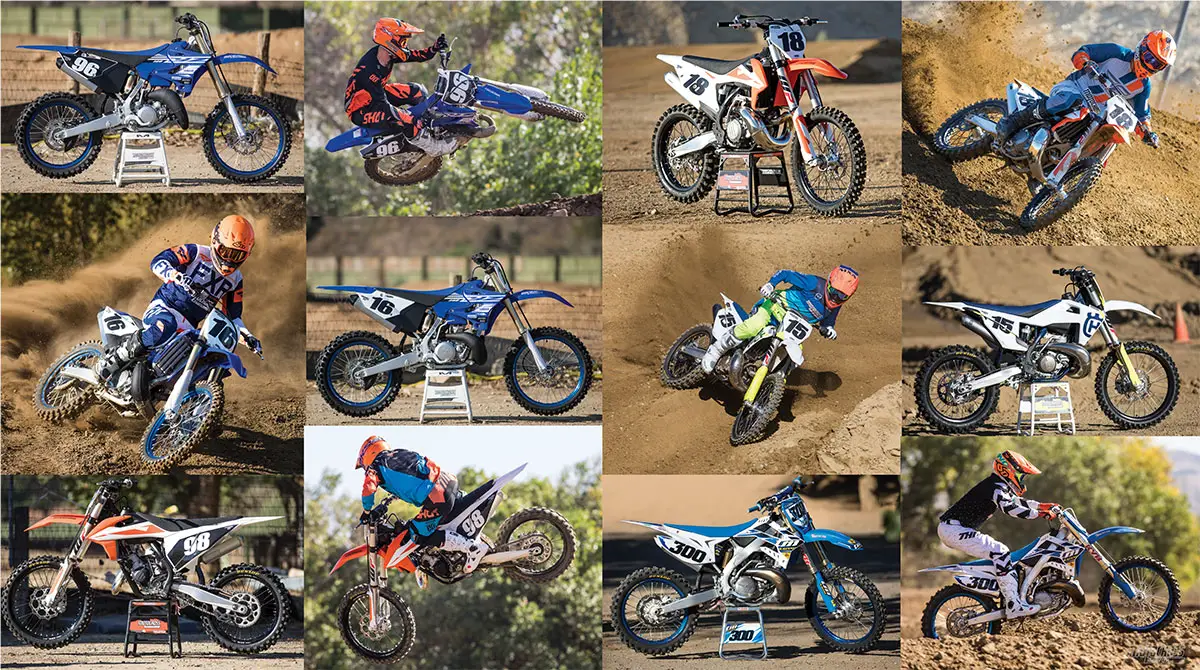




Comments are closed.